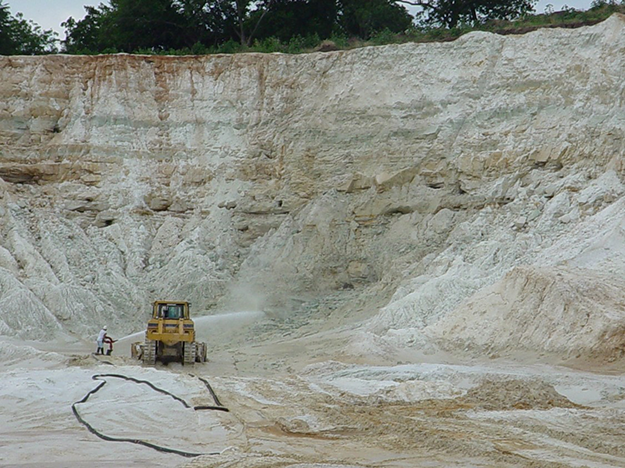Industrial Sand
Industrial sand refers to high purity silica sand. Besides its purity, grain size is an important characteristic. Silica has a simple chemical formula: SiO2. Silicon and oxygen are the most abundant elements in the Earth’s crust; the most common mineral with this formula is quartz, although it may have many crystal forms.
Oklahoma ranked 8th in the production of industrial sand in 2016 according to the U.S. Geological Survey. The major use for this type of sand is as a proppant in oil and natural gas production in the process known as hydraulic fracturing (also known as fracking). In this application the sand ‘props’ open fractures in rocks containing petroleum to help the oil and natural gas flow into the well for recovery: small fractures require smaller sand grain sizes, and large fractures require larger ones. Another common use of industrial sand is in glassmaking—flat glass (windows) and container glass (bottles and jars). When using industrial sand as a filtering agent in making wine and brewing beer, applying the right grain size is critical.
Properties of silica sand that make it desirable are its hardness; it is chemically nonreactive; and it has a high melting point. These are beneficial in glass containers that store food and drinks. Products of industrial sand are common in our culture: computer and TV screens, fiber optics, fiberglass insulation, toothpaste, pigments in paints and sealants, in weather-resistant caulking, golf-course sand traps, and many more.
The primary method of mining industrial sand in Oklahoma is by surface quarrying. Standard drilling and blasting occur, but at one location, the quarry walls are washed down into the open pit by water cannons, in a technique called hydraulic mining (Figure 1). From the quarry the sand is sent to a processing plant to remove impurities before pure silica sand is sent out and used in its many applications.
Additional Information
To learn more about industrial sand visit the National Industrial Sand Association and The Industrial Minerals Association-North America (IMA-NA) websites.
To see more about hydraulic fracturing, view the Marathon Oil Company video Animation of Hydraulic Fracturing (Fracking).
To learn how flat glass is made, visit the Cardinal Glass Industries, Inc. website.


